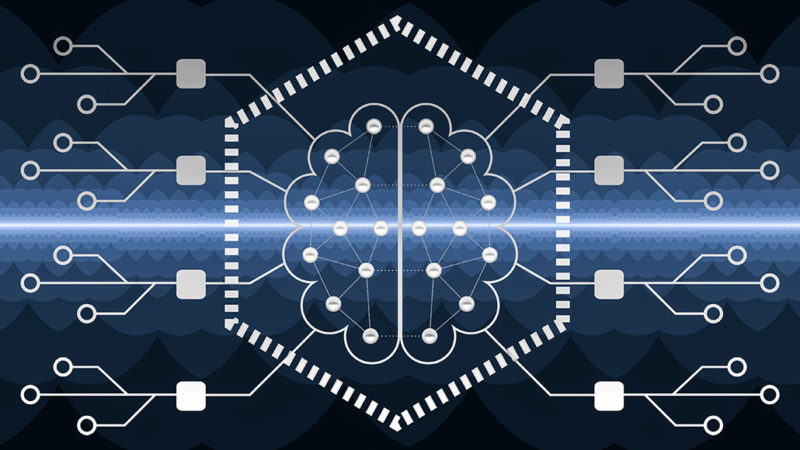
Relating to figuring out scents, a “neuromorphic” synthetic
intelligence beats different AI by greater than a nostril.
The brand new AI learns to acknowledge smells extra effectively and reliably
than different algorithms. And in contrast to different AI, this method can continue learning new
aromas with out forgetting others, researchers report on-line March 16 in Nature
Machine Intelligence. The important thing to this system’s success is its neuromorphic
structure, which resembles the neural circuitry in mammalian brains greater than
different AI designs.
This sort of algorithm, which excels at detecting faint indicators
amidst background noise and regularly studying on the
job, might sometime be used for air high quality monitoring, poisonous waste detection or
medical diagnoses.
The brand new AI is an artificial
neural network, composed of many computing parts that mimic nerve cells to
course of scent data (SN: 5/2/19). The AI “sniffs” by taking in
electrical voltage readouts from chemical sensors in a wind tunnel that have been
uncovered to plumes of various scents, akin to methane or ammonia. When the AI
whiffs a brand new scent, that triggers a cascade {of electrical} exercise amongst its nerve
cells, or neurons, which the system remembers and may acknowledge sooner or later.
Just like the olfactory system within the mammal mind, among the AI’s
neurons are designed to react to chemical sensor inputs by emitting in a different way
timed pulses. Different neurons study to acknowledge patterns in these blips that
make up the odor’s electrical signature.
This brain-inspired setup primes the neuromorphic AI for studying
new smells greater than a standard synthetic neural community, which begins as a
uniform net of equivalent, clean slate neurons. If a neuromorphic neural community
is sort of a sports activities workforce whose gamers have assigned positions and know the foundations
of the sport, an abnormal neural community is initially like a bunch of random
newbies.
Because of this, the neuromorphic system is a faster, nimbler research.
Simply as a sports activities workforce might have to observe a play solely as soon as to know the
technique and implement it in new conditions, the neuromorphic AI can sniff a
single pattern of a brand new odor to acknowledge the scent sooner or later, even amidst
different unknown smells.
In distinction, a bunch of learners might have to observe a play many
occasions to reenact the choreography — and nonetheless battle to adapt it to future
game-play situations. Likewise, a regular AI has to review a single scent pattern
many occasions, and nonetheless won’t acknowledge it when the scent is combined up with
different odors.
Thomas Cleland of Cornell College and Nabil Imam of Intel in
San Francisco pitted their neuromorphic AI towards a standard neural community
in a scent take a look at of 10 odors. To coach, the neuromorphic system sniffed a single
pattern of every odor. The standard AI underwent lots of of coaching trials
to study every odor. Through the take a look at, every AI sniffed samples by which a discovered
scent was solely 20 to 80 % of the general scent — mimicking real-world
situations the place goal smells are sometimes intermingled with different aromas. The
neuromorphic AI recognized the suitable scent 92 % of the time. The usual
AI achieved 52 % accuracy.
Priyadarshini Panda, a neuromorphic engineer at Yale College,
is impressed by the neuromorphic AI’s eager sense of scent in muddled samples.
The brand new AI’s one-and-done studying technique can also be more
energy-efficient than traditional AI programs, which “are usually very energy
hungry,” she says (SN: 9/26/18).
One other perk of the neuromorphic setup is that the AI can preserve
studying new smells after its authentic coaching if new neurons are added to the
community, just like the way in which that new cells regularly type within the mind.
As new neurons are added to the AI, they will grow to be attuned to new
scents with out disrupting the opposite neurons. It’s a special story for
conventional AI, the place the neural connections concerned in recognizing a sure odor,
or set of odors, are extra broadly distributed throughout the community. Including a brand new
scent to the combo is liable to disturb these current connections, so a typical AI
struggles to study new scents with out forgetting others — except it’s retrained
from scratch, utilizing each the unique and new scent samples.
To display this, Cleland and Imam skilled their neuromorphic
AI and a regular AI to specialise in recognizing toluene, which is used to
make paints and fingernail polish. Then, the researchers tried to show the
neural networks to acknowledge acetone, an ingredient of nail polish remover. The
neuromorphic AI merely added acetone to its scent-recognition repertoire, however
the usual AI couldn’t study acetone with out forgetting the scent of toluene.
These sorts of memory
lapses are a major limitation of present AI (SN: 5/14/19).
Continuous studying appears to work effectively for the neuromorphic system
when there are few scents concerned, Panda says. “However what in the event you make it large-scale?”
Sooner or later, researchers might take a look at whether or not this neuromorphic system can study
a much wider array of scents. However “it is a good begin,” she says.


